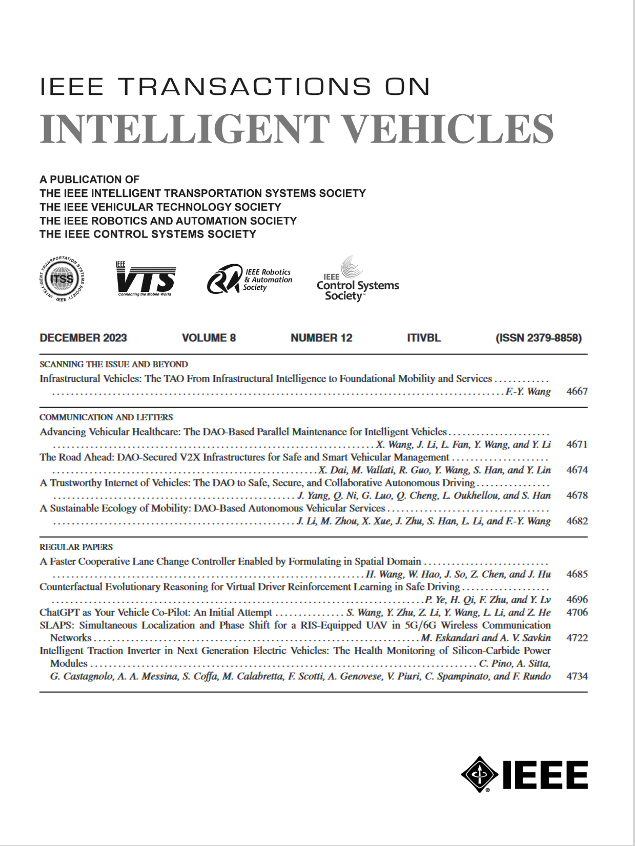自动驾驶汽车惯性车轮里程测量的偏航速度学习
IF 14.3
1区 工程技术
Q1 COMPUTER SCIENCE, ARTIFICIAL INTELLIGENCE
引用次数: 0
摘要
在本文中,我们提出了一种利用基于学习的自动驾驶汽车偏航速度估计的惯性车轮里程计。利用一种新的基于注意力的神经网络,即YNet,将惯性测量单元(IMU)和车轮编码器的多模态数据集成在一起来估计偏航速度。然后将这些基于学习的估计与车轮编码器的速度测量一起集成到最先进的不变扩展卡尔曼滤波器中。仅依靠运动测量传感器,即IMU和车轮编码器,即可实现令人印象深刻的长期定位性能。这种特性使其在各种复杂环境中具有出色的鲁棒性,超越了视觉或基于激光雷达的里程计方法的局限性。对Kaist数据集和实际实验的评估表明,所提出的方法有效地减少了长期惯性定位的漂移,与其他最先进的方法相比,取得了更好的结果。本文章由计算机程序翻译,如有差异,请以英文原文为准。
Learning Yaw Velocity for Inertial-Wheel Odometry on Autonomous Vehicles
In this paper, we present an inertial-wheel odometry leveraging the learning-based yaw velocity estimations for autonomous vehicles. A novel attention-based neural network, namely YNet, is employed to estimate yaw velocities by integrating multimodal data from the Inertial Measurement Unit (IMU) and wheel encoders. These learning-based estimations are then integrated into a state-of-the-art invariant extended Kalman filter along with the velocity measurements from wheel encoders. Impressive long-term localization performance is achieved by relying solely on motion measurement sensors, namely IMU and wheel encoders. This characteristic grants it remarkable robustness in diverse and complex environments, surpassing the limitations of vision or lidar based odometry methods. The evaluations on the Kaist datasets and real-world experiments demonstrate that the proposed approach effectively reduces the drift of long-term inertial localization, yielding superior results compared to other state-of-the-art methods.
求助全文
通过发布文献求助,成功后即可免费获取论文全文。
去求助
来源期刊

IEEE Transactions on Intelligent Vehicles
Mathematics-Control and Optimization
CiteScore
12.10
自引率
13.40%
发文量
177
期刊介绍:
The IEEE Transactions on Intelligent Vehicles (T-IV) is a premier platform for publishing peer-reviewed articles that present innovative research concepts, application results, significant theoretical findings, and application case studies in the field of intelligent vehicles. With a particular emphasis on automated vehicles within roadway environments, T-IV aims to raise awareness of pressing research and application challenges.
Our focus is on providing critical information to the intelligent vehicle community, serving as a dissemination vehicle for IEEE ITS Society members and others interested in learning about the state-of-the-art developments and progress in research and applications related to intelligent vehicles. Join us in advancing knowledge and innovation in this dynamic field.
 求助内容:
求助内容: 应助结果提醒方式:
应助结果提醒方式:


